Ipomoea barbatisepala, Canyon Morning-glory
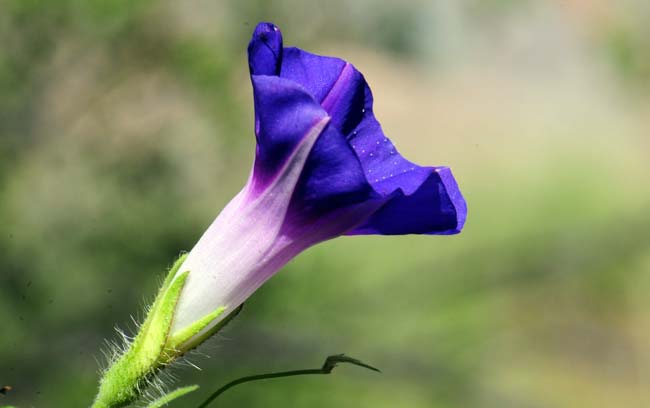
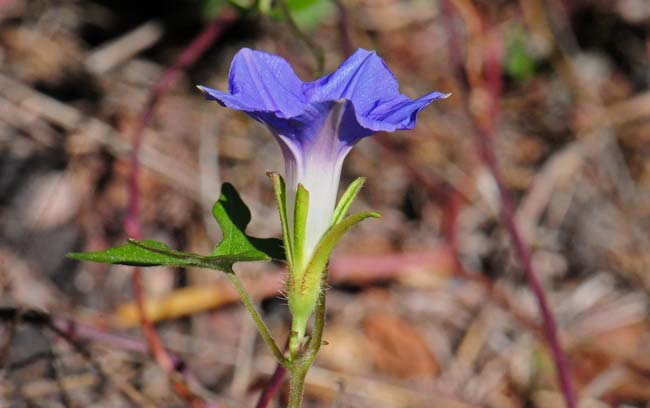
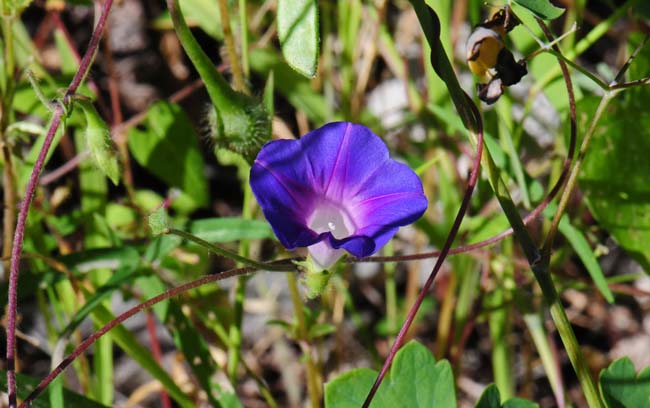
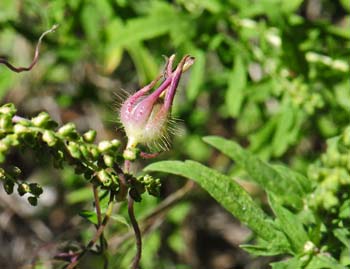
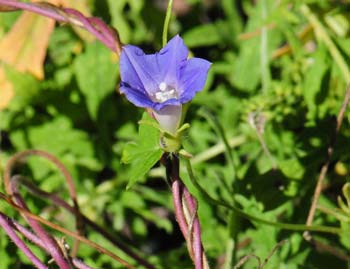
Scientific Name: Ipomoea barbatisepala
Common Name: Canyon Morning-glory
Also Called: Canyon Morningglory, Morning Glory; (Spanish: Gloria de la Mañana)
Family: Convolvulaceae, Morning Glory Family
Synonyms: ()
Status: Native
Duration: Annual
Size: Unknown, uses support for height from neighboring plants.
Growth Form: Forb/herb; vine; low climbing, height achieved from climbing adjacent plants, mostly glabrous until fruiting.
Leaves: Green; variably lobed with 5, 6 or 7 lobes, leaf lobes heart-shaped or linear.
Flower Color: Purplish-pink or white; flowers glabrous and with short stalks (pedicels), corolla trumpet shaped, sepals relatively long and narrow, pubescent in fruit, fruit a globose capsule.
Flowering Season: July to December.
Elevation: 3,000 to 5,000 feet.
Habitat Preferences: Mid-elevations, chaparral and desert scrub, canyons, near other plants for growth support.
Recorded Range: Ipomoea barbatisepala is rare in the United States where it is limited to Arizona, New Mexico and possibly Texas. In Arizona it can be observed in the central, southern and eastern parts of the state.
North America & US County Distribution Map for Ipomoea barbatisepala.
U.S. Weed Information: No information available.Invasive/Noxious Weed Information: The genus Ipomoea is listed as a Noxious Weed by Arizona and Arkansas. Exceptions in Arizona are:
Ipomoea carnea, Mexican bush morning glory,
Ipomoea triloba, Three-lobed Morning Glory, and
Ipomoea arborescens, Morning Glory Tree the federal government and/or a State.
Plants included here are invasive or noxious.
Wetland Indicator: No information available.
Threatened/Endangered Information: No information available. Genus Information: Throughout most of the United States and eastern Canada, at the time of the righting, there are approximately 67 species in Ipomoea. 14 species in Arizona.
Comments: Not much information exists for this species. As with other Arizona Morning-glories, perhaps Canyon Morning-glory should be removed from the states noxious weed list.
Also see in Southwest Desert Flora; Purple Morning-glory, Ipomoea capillacea Crestrib Morning-glory, Ipomoea costellata, Trans-Pecos morning-glory, Ipomoea cristulata, Ivyleaf Morning-glory, Ipomoea hederacea, Pinkthroat Morning-glory, Ipomoea longifolia, and Tripleleaf Morning-glory, Ipomoea ternifolia.

